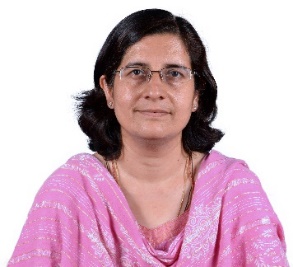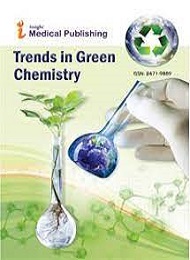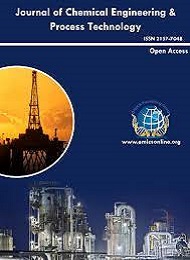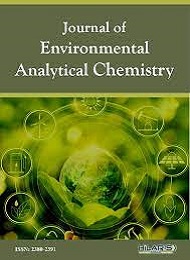Theme: Emphasize the Biodynamic scheme of Green Chemistry
Green Chem-2021
- Welcome Message
- About Conference
- Sessions and Tracks
- Market Analysis
- Participation Options
- Who/Why to attend?
Conference Series greets you to attend the 12th International Conference on Green Chemistry & Engineering, which is going to be held on November 5-6, 2021 in Rome, Italy. We heartily invite all the participants interested in sharing their knowledge and research in Recycling and Environmental Sciences. The conference will provide a platform for all the stakeholders to share their work related to Biochemistry and Molecular Biology studies.
Green Chem-2021 is mainly based on the theme “Emphasize the Biodynamic scheme of Green Chemistry”
The main motive of the conference is to gather researchers from different areas of Science and Engineering with a common goal of sustainability. The Conference program will be both exciting and ground-breaking in its wide-ranging and multidisciplinary content. In addition to keynote presentations and lectures by world renowned invited speakers, we will be offering workshops, interactive sessions, as well as special sessions.
The objective of this conference is to provide a significant platform to network and meet experts in the field and sampling of the scientific and engineering basis of green chemistry & Technology with specific process as examples.
This conference will be the best platform to explore your research work, innovations and helps to learn how to take advantage of the current market to maintain and grow your business from the leading experts in the field of Recycling.
This conference helps to frame a network with clients, prospective partners, colleagues, vendors and industry leaders and bring all of them in one location. Gathering everyone in one location will save your precious time.
Track 1: Basic Principles and New Trends in Green Chemistry
Sustainable and Green Chemistry in very simple terms is just a different way of thinking about how chemistry and chemical engineering can be done. Over the years different principles have been proposed that can be used when thinking about the design, development and implementation of chemical products and processes. These principles enable scientists and engineers to protect and benefit the economy, people and the planet by finding creative and innovative ways to reduce waste, conserve energy, and discover replacements for hazardous substances.
Green chemistry can also be defined through the use of metrics. While a unified set of metrics has not been established, many ways to quantify greener processes and products have been proposed. These metrics include ones for mass, energy, hazardous substance reduction or elimination, and life cycle environmental impacts.
“Green Chemistry is the utilization of a set of principles that reduces or eliminates the use or generation of hazardous substances in the design, manufacture and applications of chemical products”.
Principles of Green Chemistry:
1. Prevention
2. Atom Economy
3. Less Hazardous Chemical Syntheses
4. Designing Safer Chemicals
5. Safer Solvents and Auxiliaries
6. Design for Energy Efficiency
7. Use of Renewable Feedstocks
8. Reduce Derivatives
9. Catalysis
10. Design for Degradation
11. Real-time analysis for Pollution Prevention
12. Inherently Safer Chemistry for Accident Prevention
Track 2 - Green Technologies in Food Manufacture & Processing
Green food production often suggests organic farming practices a few centuries ago. This type of farming uses a small area of land for crops and another area for grazing beef, sheep, and goat. Farm entities were almost always independent with no use of pesticides or herbicides and the only fertilizer used was manure.
Organic farming wills ensembles the notion of a green technology. Primary, secondary, and tertiary processing techniques are discovered to convert raw produce into value-added foods and ingredients. Primary processing techniques such as cleaning, grading, dehulling, sorting, and milling are used as initial step in processing most of the grains.
One of the most promising technological approaches to decrease environmental footprint in food processing is the use of enzymes. Enzymes speed up reaction rates and results in savings in terms of time, energy, and cost. Food enzymes provide advantages in terms of specificity, sensitivity, their relative non-toxicity, high activity at low concentrations, and ease of inactivation.
Track 3: Green Chemistry in Pharmaceutical Industries
Green chemistry is being employed to develop revolutionary drug delivery ways in which area unit additional sensible and fewer toxic and can profit multitudinous patients. Solid-phase synthesis of antisense oligonucleotides has been changed to accommodate principles of inexperienced chemistry by eliminating the employment and generation of toxic materials and allowing employees of valuable materials like amenities, solid-support, and protecting groups, thus raising the atom economy and cost-efficiency.
In the past, the industrial production of Adipic acid used benzene as a starting material. Benzene is one of the basic chemicals for industrial reactions and a solvent. It is known that derives mainly from the refining processes of the petrochemical industry. Benzene is also known for its carcinogenic properties (it causes leukemia to highly exposed workers). Afterwards the starting material became cyclohexanone or a mixture of cyclohexanone and cyclohexanol. For the oxidation process it was used nitric acid, producing toxic fumes of nitric oxides, NOx, which are also contributors to the greenhouse effect and the destruction of the ozone layer in the strat osphere. It was Inevitable that the method had to be changed again with more environmentally benign reactions.
Track 4: Green and Sustainable Chemistry
Green chemistry is the form of chemical products and processes that reduce the harmful substances or generation of hazardous substances. Green chemistry applies across the life cycle of a chemical product, as well as its design, manufacture, use, and supreme disposal. The aim of green chemistry is to reduce the chemical connected impact on human health and nearly eliminate contamination of the surroundings through dedicated, sustainable prevention programs. These principles are often classified into "Reducing Risk" and "Minimizing the Environmental Footprint".
Track 5: Sustainability and Environmental Safety
At the global scale and in the broadest sense sustainability and environmental safety management involves managing the oceans, freshwater systems, land and atmosphere, according to sustainability principles.
Land use change is fundamental to the operations of the biosphere because alterations in the relative proportions of land dedicated to urbanization, agriculture, forest, woodland, grassland and pasture have a marked effect on the global water, carbon and nitrogen biogeochemical cycles. Management of the Earth's atmosphere involves assessment of all aspects of the carbon cycle to identify opportunities to address human-induced climate change and this has become a major focus of scientific research because of the potential catastrophic effects on biodiversity and human communities. Ocean circulation patterns have a strong influence on climate and weather and, in turn, the food supply of both humans and other organisms.
Track 6: Green Chemistry: Challenges and Opportunity
The Green Chemistry revolution is providing a massive range of challenges to those that follow chemistry in trade, an equal range of opportunities to get and apply new chemistry, to boost the economic science of chemical producing substances which will not involve materials harmful to the surroundings. the chemistry that deals with the applying of environmentally friendly chemical compounds within the varied areas of our life like industrial uses and plenty of developed by the requirement. The chemicals product, from plastics to prescription drugs. However, these industries have the potential to significantly injury the environment. Green chemistry thus serves to push the look of environmentally benign chemicals and chemical processes.
Track 7: Analytical Methods in Green Chemistry
The growing interest in green chemistry needs contemporary views on analytical extractions. Reduced solvent consumption, different safer solvents, and cheap energy demands should be balanced with ancient analytical issues like extraction yield and by selection. This session deals with a number of the ideas behind green chemistry and discusses green solvent choice and extraction techniques. an outline of alternatives to standard solvents, new green solvents, ionic liquids, and alternative solvent choices are going to be mentioned during this scientific discussion.
An analytical method or analytical technique is a method to determine the concentration of a chemical compound or element in a sample. There is a very wide variety of methods used for analysis which afford different degrees of sample preparation and instrumentation
Track 8: Green Polymer and Plastic Chemistry
Green chemistry is a part of chemistry and chemical engineering centered on the coming up with of products and processes that minimize the employment and generation of venturesome substances. One amongst the foremost vital branch is green compound chemistry Natural polymers, biomass conversion in biorefineries, and chemical greenhouse emission fixation area unit teamed up with extremely effective trade, process, and usage of polymers.
Track 9: Green Manufacturing and Engineering
Green Manufacturing: Fundamentals and Applications introduces the fundamental definitions and problems encompassing green producing at the method, machine, and system (including provide chain) levels. It conjointly shows, by the manner of many examples from completely different business sectors, the potential for substantial improvement and therefore the ways to attain the advance. in addition, this conference discusses restrictive and government motivations for green producing and descriptions the trail creating for creating producing additional green yet as making production additional property. Specifically, analysis is targeted on minimizing contaminants and machining defects throughout manufacture, rising the exactitude and repeatability of chemical mechanical sharpening, green machine tools and processes, property packaging, and modeling property, environmentally-conscious producing processes and systems.
Track 10: Biofuels and Alternative Energy
Bioenergy comes from biofuels. Biofuels are fuels made directly or indirectly from organic material – biomass – as well as plant materials and animal waste. Overall, bioenergy covers some 100% of the entire world's energy demand. ancient unprocessed biomass like fuel-wood, charcoal, and animal dung accounts for many of this and represents the most supply of energy for an outsized variety of individuals in developing countries WHO use it principally for cookery and heating. A distinction is formed between primary and secondary biofuels. within the case of primary biofuels, like fuelwood, wood chips, and pellets, organic materials are utilized in AN unprocessed kind, primarily for heating, cookery, or electricity production. Bioenergy is principally utilized in homes (80%), to a lesser extent in business (18%), whereas liquid biofuels for transport still play a restricted role (2%).
Track 11: Bio-Separations: Recent Advances
Bioseparation is that the name given to the follow of purifying biological product on large-scale, victimization basic aspects of engineering and scientific principles. the tip goal of bioseparation is to refine molecules, cells, and components of cells into refined fractions. it's usually recognized that the industrial success of biotechnology products extremely keen on product development and application of high-powered separation and purification ways. Analytical techniques embrace a stimulating of activity ways, capillary cataphoresis, isoelectric focusing, and mass spectrum analysis. Among separation and purification ways, liquid-liquid distribution, displacement action, dilated bed sorption, membrane action, and simulated moving bed action area unit coated at length. regulative and economic concerns area unit addressed, as area unit plant and method instrumentation and engineering method management.
Track 12: Green Chemistry for Nanoparticle Synthesis
This field has received nice attention in recent years thanks to its capability to style various, safer, energy economical, and fewer noxious routes towards synthesis. These routes are related to the rational utilization of assorted substances within the nanoparticle preparations and artificial strategies that are loosely mentioned during this tutorial review. this text isn't meant to produce AN thorough summary of inexperienced synthesis of nanoparticles, however, to gift many important aspects of synthesis with environmental considerations, involving the choice and analysis of nontoxic capping and reducing agents, the selection of innocuous solvents and therefore the development of energy-efficient artificial strategies.
Track 13: Green Chemistry for Nanoparticle Synthesis
This field has received nice attention in recent years thanks to its capability to style various, safer, energy economical, and fewer noxious routes towards synthesis. These routes are related to the rational utilization of assorted substances within the nanoparticle preparations and artificial strategies that are loosely mentioned during this tutorial review. this text isn't meant to produce AN thorough summary of inexperienced synthesis of nanoparticles, however, to gift many important aspects of synthesis with environmental considerations, involving the choice and analysis of nontoxic capping and reducing agents, the selection of innocuous solvents and therefore the development of energy-efficient artificial strategies.
Track 14: Chemistry in Coronavirus Research
Chemistry has a key position to play in perception the entirety from viral shape to pathogenesis, isolation of vaccines and therapies, as properly as in the improvement of materials and techniques used through basic researchers, virologists, and clinicians. This Virtual Issue aims to provide a quick overview of the important contributions of chemistry to understanding and controlling the spread of coronaviruses
The global marketplace for renewable chemicals is predicted to grow from $51.7 billion in 2015 to $85.6 billion by 2020, with a compound annual rate of growth (CAGR) of ten.6% for the amount of 2015-2020. Green Chemistry - renewable chemicals derived from bio-based feedstocks victimization setting all friendly production technologies—have gone world. BCC analysis estimates in its new report the world industry can grow to over $1.5 trillion annually once bio-based and renewable product replaces the existing product and supply new revenue sources to firms and regional economies. Also, the manufacture of surfactants and lubricants, trade goods, resins, and plastics for environmental purposes use renewable chemicals. Growing shopper awareness of renewable chemicals and increasing environmental issues square measure driving growth within the market. additionally, regulators within the U.S., U.K., and E.U. have developed rules regarding the manufacture and disposal of petrochemicals, that have helped to spice up renewable chemicals consumption throughout the past few years as firms get compliance. Volatile fossil fuel costs plus high costs of finished petrochemicals square measure calculable to reinforce market growth.
The demand for green chemicals is particularly high in the construction and textile industries due to the benefits these chemicals offer, such as protection from natural calamities, minimum use of cement and water, resistance to climatic changes and chemicals, high durability, color, and strength.
Green chemicals provide higher performance and better functionality for products. They are also more environmental-friendly throughout the entire life-cycle and are less harmful as compared to petroleum-based chemicals. All these reasons are expected to brighten up the growth prospects for the green chemicals market.
Green chemicals are bio-based chemicals. They are renewable and are produced from bio-feedstock. The raw materials that are largely used for the production of green chemicals are vegetable oils, corn, sugarcane, sugar beet, wheat, and cassava, among others.
Some of the raw materials used for making green chemicals are also derived from recycled products, which help enhance the quality of life and are not hazardous to the environment. These green chemicals reduce environmental impacts associated with disposal, recycling, transportation, processing, installation, and fabrication, besides promoting the preservation of natural non-renewable resources.
Green Chemicals Market, By Product Type:
The green chemicals market has been segmented based on product type as bio-alcohols, bio-organic acids, bio-ketones, biopolymers platform chemicals, and others. The bio-alcohols segment accounts for the largest green chemicals market share due to the increasing demand for bio-alcohols from the food & beverages and pharmaceuticals, among other sectors.
Green Chemicals Market, By End-use Industry:
Based on application, the green chemicals market has been segmented into construction, healthcare, pharmaceuticals, packaging, food & beverages, paints & coatings, automotive, agriculture, textile, and others. Green chemicals have extensive demand in the textile industry, as they are used in greener fiber, greener dyes, and greener solvents.
In the pharmaceuticals sector, developments of medicines with no or less side effects and the focus on processes that produce no toxic waste have led to the increasing adoption of the green chemicals technology. Merck and Codexis have developed a second-generation green synthesis of sitagliptin, which is an active ingredient used in JanuviaTM , a medicine for type 2 diabetes. This collaboration and development have led to a key enzymatic process in improving safety and yield, eliminating the use of metal catalyst in the manufacturing process and reducing waste.
Chemical Associations Around the Globe:
- Society of Environmental Toxicology and Chemistry
- TCNJ’s Student Chemists Association
- Lombardy Green Chemistry Association
- A Sustainable Global Society
- Chemistry Society of Peru
- Southen Nevada Local Section of the American Chemical Society
- Chemistry Graduate Student Association (CGSA) Nevada, Reno
- American Institute of Chemical Engineers
- American Chemistry Council
Green Chemistry Universities Worldwide:
Green Chemistry Universities at Asia :
Peking University | University of Cambridge | University of Tokyo | Zhejiang University | Nanjing University | Kyoto University | California Institute of Technology | University of Chicago | Fudan University | University of Oxford | University of Science and Technology of China | Georgia Institute of Technology | Osaka University | Swiss Federal Institute of Technology Zurich | Green Chemistry Meetings | Korea Advanced Institute of Science and Technology | Environmental Chemistry Conferences | University of California | Green Chemistry Conferences | Imperial College | University of Wisconsin | East China University of Science and Technology | Sustainable Chemistry Conferences | Dalian University of Technology | Xiamen University | University of Illinois | Green Chemistry Conferences | University of Michigan | Jilin University | Nankai University | University of Toronto | Tohoku University | Princeton University | University of North Carolina | University of Minnesota | National Taiwan University | Sustainable Chemistry Conferences | University of Pennsylvania | Seoul National University | Cornell University | University of California | Shanghai Jiao Tong University | Texas A&M University | Pennsylvania State University | Chemistry Conferences | Pohang University of Science and Technology
Europe Green Chemistry Universities:
University of Graz | University of Innsbruck | Montanuniversität Leoben | Johannes Kepler University | Green Chemistry Conferences | Ghent University | Ruaer Boskovia Institute | University of Split | Green Chemistry Conferences | University of Zagreb | Charles University | Palacký University | University of Pardubice | Green Chemistry Meetings | University of Copenhagen | Aalto University | University of Grenoble University of Barcelona | University of the Basque Country | University of Cádiz | University of Extremadura | University of Granada | University of Jaén | University of Oviedo | University of Santiago de Compostela | University of Valladolid | University of Vigo | University of Zaragoza | Stockholm University | University of Bradford | University College Cork | Green Chemistry Conferences | Masaryk University | Robert Gordon University | Sheffield Hallam University | University of Southampton | University of Warwick | Institute for Research in Organic Fine Chemistry | National Graduate School of Engineering Chemistry | Lille University | University of Lyon | Chimie Paris tech | Laboratory Analytical Sciences | University of Poitiers | University of Pau and Adour Country | University of Reims Champagne | University of Strasbourg | University in Aachen | University of Bayreuth | Chemistry Conferences | Technical University of Berlin | Free University of Berlin | Ruhr University Bochum | University of Bonn | University of Alicante | Environmental Chemistry Conferences
Green Chemistry Universities at USA :
Green Chemistry Universities at Africa:
Green Chemistry Societies:
Green Chemistry Companies in Europe:
Green Chemistry Companies in USA :
Green Chemistry Companies in Middle East and Asia:
Sineo Microwave Chemistry Technology Co., Ltd | Green Chemistry Conferences | Buchiglas China Corp | Taixing WTR Chemical Plant | Skyray Instrument Inc. | L & W Optics Electronics Co., Ltd | HB Optical Technology Co. Ltd | Beijing Rayleigh Analytical Instruments Corp | Green Chemistry Meetings | Tianjin Bonna Agela Technologies Cs | Shanghai Xu Hang Pharmaceutical Co. Ltd | Chemistry Conferences | Infinium Pharmachem Pvt. Ltd | TTL Technologies Pvt. Ltd | AIMIL LTD | Electro lab | Netel India Limited | Environmental Chemistry Conferences | Agilent Technologies India Pvt. Ltd | Hitachi High-Tech Science Corporation | T&D Corporation | Alfa Mirage Co., Ltd | Hamamatsu Photonics K.K | BDH Middle East LLC | ALS Arabia
Green Chem-2021, provides the participants with different modes or ways to participate under either ACADEMIC / STUDENT / BUSSINESS Category
- SPEAKER (Oral Presentation) : 25-30 minutes (only one person can present)
- SPEAKER (Workshop) : 45-50 minutes (more than 1 can present)
- SPEAKER (Special Session) : 45-50 minutes (more than 1 can present)
- SPEAKER (Symposium) : more than 45 minutes (more than 1 can present)
- DELEGATE(only registration): Will have access to all the sessions with all the benefits of registration
- POSTER PRESENTER: Can present a poster and avail the benefits of delegate
- REMOTE ATTENDENCE: Can participate via VIDEO presentation or E-poster presentation
- EXHIBITOR: Can exhibit his/her company’s products by booking exhibitor booths of different sizes
- MEDIA PARTNER
- SPONSOR
- COLLABORATOR
For Researchers & Faculty:
For Universities, Associations & Societies:
For Students & Research Scholars:
- Poster Competition (Winner will get Best Poster Award)
- Young Researcher Forum (YRF Award to the best presenter)
- Student Attendee
- Group Registrations
For Business Delegates:
- Speaker Presentations
- Symposium hosting
- Book Launch event
- Networking opportunities
- Audience participation
For Companies:
- Exhibitor and Vendor Booths
- Sponsorships opportunities
- Product launch
- Workshop organizing
- Scientific Partnering
- Marketing and Networking with clients
For more details about each mode, kindly contact:
Eva Smith (Program Manager)
PARTICIPATION OPTIONS:
Analytical Chemistry 2020, provides the participants with different modes or ways to participate under either ACADEMIC / STUDENT / BUSSINESS Category
- SPEAKER (Oral Presentation) : 25-30 minutes (only one person can present)
- SPEAKER (Workshop) : 45-50 minutes (more than 1 can present)
- SPEAKER (Special Session) : 45-50 minutes (more than 1 can present)
- SPEAKER (Symposium) : more than 45 minutes (more than 1 can present)
- DELEGATE(only registration): Will have access to all the sessions with all the benefits of registration
- POSTER PRESENTER: Can present a poster and avail the benefits of delegate
- REMOTE ATTENDENCE: Can participate via VIDEO presentation or E-poster presentation
- EXHIBITOR: Can exhibit his/her company’s products by booking exhibitor booths of different sizes
- MEDIA PARTNER
- SPONSOR
- COLLABORATOR
For Researchers & Faculty:
- Speaker Presentations
- Poster Display
- Symposium hosting
- Workshop organizing
For Universities, Associations & Societies:
- Association Partnering
- Collaboration proposals
- Group Participation
For Students & Research Scholars:
- Poster Competition (Winner will get Best Poster Award)
- Young Researcher Forum (YRF Award to the best presenter)
- Student Attendee
- Group Registrations
For Business Delegates:
- Speaker Presentations
- Symposium hosting
- Book Launch event
- Networking opportunities
- Audience participation
For Companies:
- Exhibitor and Vendor Booths
- Sponsorships opportunities
- Product launch
- Workshop organizing
- Scientific Partnering
- Marketing and Networking with clients
For more details about each mode, kindly contact:
Eva Smith (Program Manager)
mail id: analyticalchemistry@globalexpertsmeetings.com
Why to attend???
Be the first to showcase your research, innovation and brand to gain competitive advantages. Meet your target audience and explore your product and services.
• Build your professional network.
• Hear about the latest research.
• Improve your presentation and communication skills.
• Get response on an early version of your latest work.
• Acquire beyond your field or interest.
• Get opportunity to people to meet you.
• Know the strengths and weakness of your conferences.
• Easier to solve the problems and struggles which you go through at work.
Who should attend??
A great opportunity to network with your peers from academia and industry:
• Scientists
• Young research fellows
• Research Scholars
• Residents, Fellows & Post Docs
• Students
• Agro, Bio, Chemical, Medical, Pharma, Technology Companies
• Business Executives & Directors
• Chemistry Associations
• Advertising Agency Executives
• Industry professionals
Conference Highlights
- Basic Principles and New Trends in Green Chemistry
- Green Technologies in Food Manufacture & Processing
- Green Chemistry in Pharmaceutical Industries
- Green and Sustainable Chemistry
- Sustainability and Environmental Safety
- Green Chemistry: Challenges and Opportunity
- Analytical Methods in Green Chemistry
- Green Polymer and Plastic Chemistry
- Green Manufacturing and Engineering
- Biofuels and Alternative Energy
- Bio-Separations: Recent Advances
- Green Chemistry for Nanoparticle Synthesis
- Green Chemistry for Nanoparticle Synthesis
- Chemistry in Coronavirus Research
To share your views and research, please click here to register for the Conference.
To Collaborate Scientific Professionals around the World
| Conference Date | November 05-06, 2021 | ||
| Sponsors & Exhibitors |
|
||
| Speaker Opportunity Closed | |||
| Poster Opportunity Closed | Click Here to View | ||
Useful Links
Special Issues
All accepted abstracts will be published in respective Our International Journals.
- Trends in Green Chemistry
- Journal of Chemical Engineering & Process Technology
- Journal of Environmental Analytical Chemistry
Abstracts will be provided with Digital Object Identifier by

























